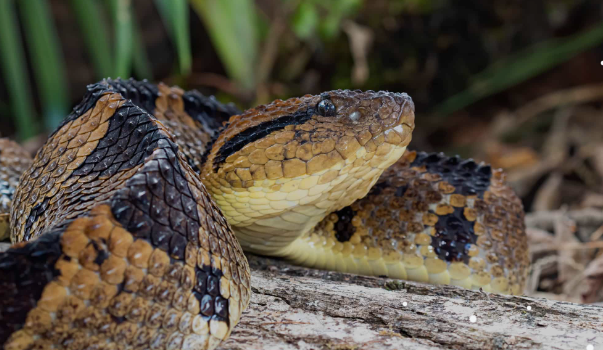Unraveling the Mysteries of the Fer-de-Lance: The Deadly Serpent of the Americas

The world of reptiles is vast and varied, but few creatures capture our imagination and fear as much as the fer-de-lance. Known scientifically as Bothrops asper, this snake has earned a reputation as one of the most venomous in the Americas. But is the fer-de-lance truly the most poisonous snake? And what are the chances of survival if one is bitten by this formidable reptile? Let’s dive deep into the world of the fer-de-lance and uncover the truths behind its myths.
Also Read:- Boomslang Snake: Understanding Its Venom, Bite Effects, and Comparisons with the Black Mamba
The Fer-de-Lance: A Brief Overview
The fer-de-lance, also known as the lancehead, is a type of pit viper found predominantly in Central and South America. It’s a snake that demands respect, not just for its venom but also for its aggressive nature. The fer-de-lance is responsible for more snakebite deaths in its native range than any other snake, making it a creature both feared and revered.
Is the Fer-de-Lance the Most Poisonous Snake?
The term “poisonous” is often misused when referring to snakes. Snakes are venomous, not poisonous. Poison is ingested or touched, while venom is injected. That said, the fer-de-lance’s venom is incredibly potent. It contains a mix of enzymes, proteins, and toxins that can cause severe tissue damage, bleeding disorders, and even death.
However, while the fer-de-lance is undoubtedly one of the most venomous snakes in the Americas, it doesn’t hold the title of the world’s most venomous snake. That dubious honor goes to the Inland Taipan of Australia, which has venom potent enough to kill over 100 adult humans with a single bite. Still, the fer-de-lance’s venom is nothing to scoff at, and its aggressive nature makes it a significant threat.
Surviving a Fer-de-Lance Bite: What Are the Odds?
The survival rate for a fer-de-lance bite, if untreated, is grim. Its venom can cause rapid tissue necrosis, leading to the loss of limbs or even life. However, with prompt medical treatment, including antivenom administration, the survival rate increases dramatically. It’s crucial for victims to seek medical attention immediately after a bite. The faster the treatment, the better the outcome.
The Origin of the Name: Why is it Called a Fer-de-Lance?
The name “fer-de-lance” is French for “spearhead.” This name is apt given the snake’s lance-shaped head and its propensity to strike with precision. The fer-de-lance’s head is not only a tool for delivering venom but also houses heat-sensitive pits that help it detect prey. This snake’s name reflects both its appearance and its deadly nature.
The World’s Most Venomous Snakes: A Quick Look
While the fer-de-lance is a contender for the title in the Americas, globally, other snakes pack an even deadlier punch. As mentioned earlier, the Inland Taipan of Australia is the most venomous. Other contenders include the Black Mamba of Africa and the King Cobra of Asia. Each of these snakes has venom that can kill a human in mere hours, if not minutes.
Conclusion
The fer-de-lance is a fascinating and fearsome creature, deserving of both our respect and caution. While it may not be the world’s most venomous snake, it’s undoubtedly one of the most dangerous in its native range. Understanding this snake, its behavior, and the myths surrounding it can help us coexist with it and appreciate its role in the ecosystem. After all, every creature, no matter how deadly, has its place in the circle of life.
Frequently Asked Questions (FAQs) about the Fer-de-Lance
1. What is a fer-de-lance?
- The fer-de-lance, also known as the lancehead, is a type of pit viper found predominantly in Central and South America. It’s known for its potent venom and aggressive nature.
2. Is the fer-de-lance the most poisonous snake in the world?
- No, the term “poisonous” is often misused. Snakes are venomous, not poisonous. While the fer-de-lance is one of the most venomous snakes in the Americas, the title of the world’s most venomous snake goes to the Inland Taipan of Australia.
3. What is the survival rate for a fer-de-lance bite?
- If untreated, the survival rate for a fer-de-lance bite can be low due to the potency of its venom. However, with prompt medical treatment, including the administration of antivenom, the survival rate increases significantly.
4. Why is it called a fer-de-lance?
- The name “fer-de-lance” is French for “spearhead.” This name reflects the snake’s lance-shaped head and its precision when striking.







